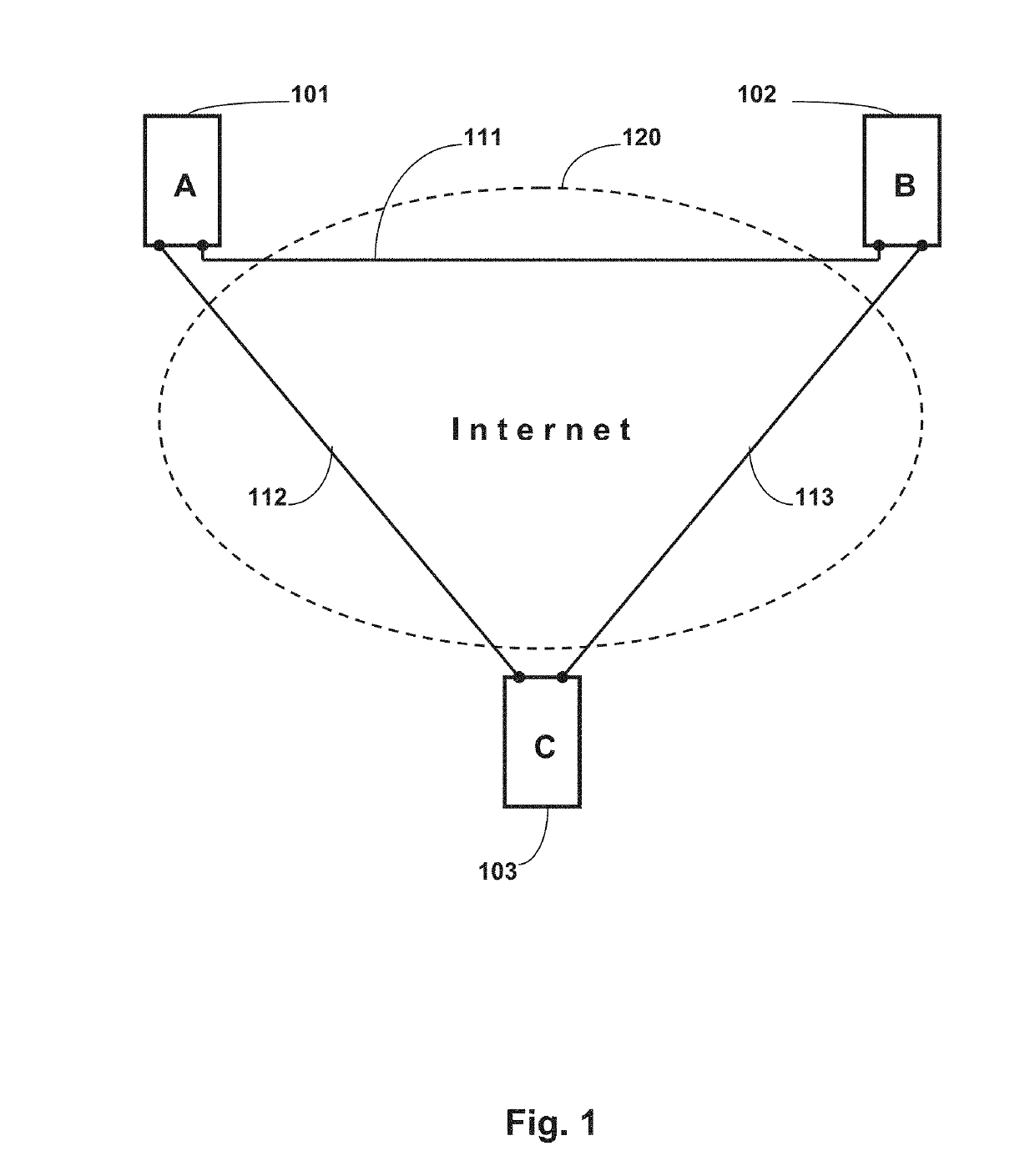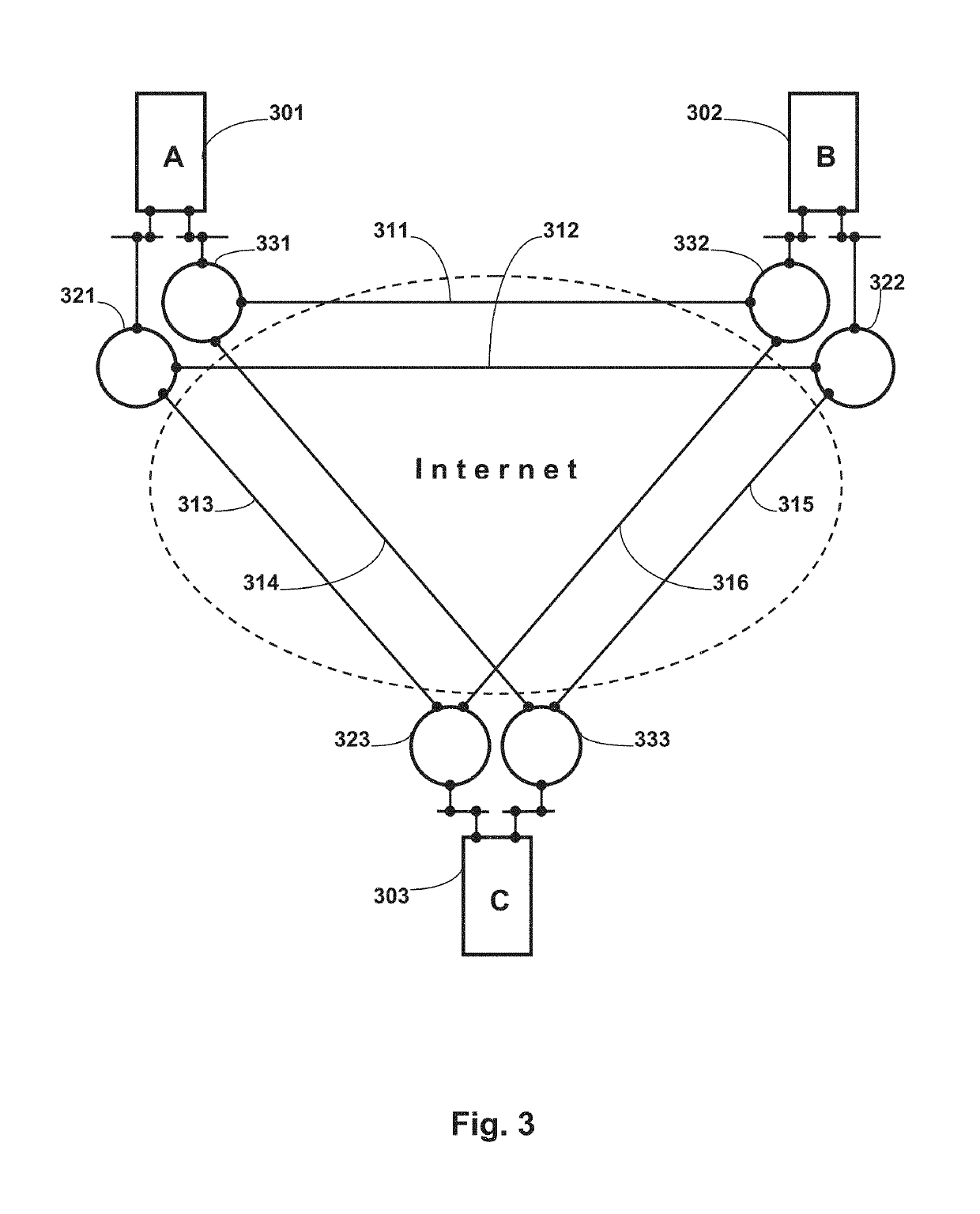Efficiency, however, was not a characteristic of using
the Internet for business involving transfer of digital assets, such as money in
bank account.
The protocol is a perfect fit for double entry accounting transactions involving two separate
database systems, but it is not resilient to all possible failures and thus cannot provide guaranteed reconciliation.
Therefore, when one of those assumptions turned out incorrect, a human intervention may be needed to remedy the consequences resulting from the failure.
Making it more secure, however, does not solve its
inherent safety14 and
liveness15 issues accelerated by the fact that in the Internet environment transaction participants cannot be expected to always cooperate.
For example, a paying node reduces the content of the payer account but a stop-faulty payee node fails to increase the content of the payee account.
Prevention of flooding the financial
system with non-existing money requires complex reconciliation procedures.
It would be difficult for the blocked participants to differentiate between genuine and fake failures.
These participants typically hold locks on resources of the involved accounts while being blocked, thereby placing the account owners in a state of commercial
disadvantage.
Yet, these qualities were facilitated by the Bitcoin
blockchain with a questionable
engineering achievement.
It could be a proper
design choice for a ledger with small number of accounts or infrequent use; otherwise, it is hardly effective or efficient.
Synchronization of multiple copies of the ledgers incurs significant costs even when all copies can be trusted as accurate and their operations are honest.
The costs arise much higher when the participants cannot trust each other and thereby making the social costs prohibitively high.
Where a
network partition splits a distributed
system, the CAP theorem states that if the
system needs to be available to continue
processing requests it has to give up the atomic consistency of replicas since there is no way to achieve an agreement about a common sequential order of execution of all transaction requests received on all replicas.
It doesn't really care about network partitions as long as the whole world is not split in two parts that cannot communicate between themselves, which is practically impossible with the multiple alternative routs of the Internet.
3) the validity of a transaction is not fully verifiable without access to all copies of the ledger.
These would give
advantage to large mining
pool over small miners and lead to centralization, which offsets the decentralization as Bitcoin's founding principle and makes the network vulnerable to
adversary attacks.
This is a promising direction for further research and development, yet it is not clear whether the concept can be implemented in a
decentralized network with industrial strength.
For example, the hash-graph consensus relies on signed messages between nodes, but there is no way a node in an open network to know in advance every other node's public key and to verify that a node sending a signed message is in fact the node it claims it is.
Interoperability across digital ledgers is a necessary element of a solution, but not the solution.
Safety of an interoperability-based solution depends on
liveness of involved ledgers and the weakest link may destroy it.
Alternatively, a single monolithic ledger requires a huge amount of messages to propagate the requests and synchronize the outcome and ability to sustain the
critical speed of
data operations inside a node with expanding volumes of data, thus making unfeasible the essential balance of
throughput and latency.
This is inefficient The more complex the synchronization with asynchronous messaging, the more expensive it is in terms of time.
Moreover, this approach is unsustainable.
At present, multi-partition
database transactions degrade the
throughput and defeat the reason to scale out.
Achieving the needed throughput and latency like most credit cards is unfeasible with a single ledger having a monolithic state and global replication.
Such throughput, eventually achievable with consensus rounds that involve very large sets of transactions, will have prohibitively large latencies as a complex consensus with asynchronous messages cannot become more efficient and the speed of
data transmission cannot exceed the
speed of light.
The stateful communication within a consensus protocol is unavoidable.
The outcome is not made durable before the consensus protocol achieves its objective.
What causes a problem is the fact that requests arrive to different nodes in different order.
Every node must be aware of every other node participating in a protocol session and these protocols are clearly inapplicable with permissionless networks.
Additionally, the number of the necessary per session messages is exponentially related to the number of nodes and the performance becomes inefficient with large permissioned networks.
Protocols' safety guarantees are probabilistic.
Strict guarantees are impractical—too many voting rounds take too much time and would destroy protocols' utility.
A negligible miscalculation of probabilities combined with unpredictable sequence of events may negatively affect it.
Blockchains' monolithic central state and the stateful consensus protocols are inconvenient for the future Internet-of-Value, which is better to be built45 with stateless consensus protocols in the way the Internet was built with stateless communication protocols.
Therefore, safety with the required performance and unrestricted growth cannot coexist with decentralization.
Thus, a stop-faulty or Byzantine faulty node cannot affect the safety of transactions with distributed state.
Execution of an asynchronous agreement protocol is the most vulnerable step in replication.
At present, however, no known technology can guarantee this without spoiling the safety or atomic consistency of replicas.
Despite these, not all issues of interdependence between safety,
liveness, and throughput are fully solved.
Similarly, a process on a healthy computer may take different time to perform a request, mainly because a different number of queued requests may wait for execution.
In contrast, synchronous system is one where performing a request or delivering a message that takes too long is considered a failure.
The necessity of a time bound is an unavoidable evil with the asynchronous systems at present.
As Leslie Lamport48 wrote49, in theory these protocols tolerate faulty computers, but in practice have difficulty distinguishing a faulty computer from an ordinary delayed message.
The same is true with computers maliciously delaying a reply message to block the protocol.
Even without a single Byzantine-faulty node in the system, a
network partition that creates a minority group with more than a third of all nodes will block the entire system since the
consensus algorithm cannot terminate.
Alternatively, when the
algorithm operates with the maximum tolerated Byzantine-faulty nodes, a single lost message will prevent
algorithm termination and the system will block.
Processing requests while a faulty or malicious replica is being recovered, however, spoils the atomic consistency between the recovered replica and the rest.
This prevents locking but spoils the throughput and may impair the ability to neutralize a real malicious behavior, thus damaging the consistency.
For a permissioned blockchain that aims to perform with high throughput, the sequential execution is not an option.
The unsolved problem with each one of these systems is the
scalability of managed data.
With a thousand transactions per second, the volume of data grows rapidly and beyond a certain point starts degrading the performance.
Blockchain use cases rarely permit perfect partitioning.
Accessing multiple partitions requires distributed transactions52, which are prone to blocking53, thus negatively affecting the availability, and have high performance costs54, thus defeating the reason to scale out.
Devising highly available high-throughput distributed transactions is a problem waiting its solution.
The challenge is to facilitate transactional interoperability between such an exchange and the networks of traded digital currencies.
This technology, however, does not accomplish direct interoperability between blockchains.
The pegged sidechains technology may compromise safety of the parent blockchain.
Origin of the main safety issue is the fact that the parent blockchain knows nothing about safety of the sidechain where the owner of an asset may decide to transfer it, but has to accept a proof from that sidechain on the way back of that asset.
Thus, a user with malicious intentions may execute a theft by creating a worthless sidechain and move a valuable asset to it.
The safety issue arises when the asset is being returned back to the parent blockchain.
Safety of an Atomic mode interledger transaction may be compromised if the consensus protocol of the notary blockchain halts and its liveness is lost.
To illustrate this with a simple interledger payments involving two blockchains, if liveness of one of the blockchains does not hold for whatever reason, this may affect the safety of the ledger of the other blockchain as a consequence of the non-atomic execution and result in one of the ledger accounts ending with incorrect amount of contained assets.
Thus, an entirely healthy blockchain may end up with a ledger with compromised safety as a result of the compromised liveness of another blockchain.
Involvement of Cosmos Hub in a cross-chain transaction with no guarantees for Cosmos Hub liveness is equally endangering transaction safety as would the lack of guarantees for Cosmos Hub safety—tokens may be immobilized in one blockchain without being created in the other blockchain.
No known technology at present can implement cross-chain transactions with guaranteed safety regardless of anything that possibly may go wrong within the tolerated limit per each blockchain that participates in a cross-chain transaction.
According to the knowledge created by
computer science and accumulated in practice, this is impossible.
 Login to View More
Login to View More  Login to View More
Login to View More 


